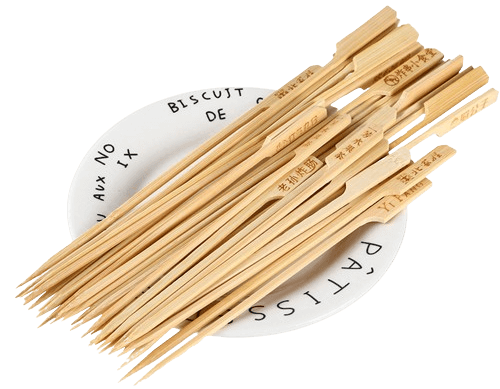Key Takeaways
- Chopsticks and Culture: Learn the deep cultural significance of chopsticks in Asian traditions.
- Choosing Chopsticks: Tips on selecting the right chopsticks for beginners.
- Chopstick Etiquette: Essential dos and don’ts of chopstick use across different cultures.
- Step-by-Step Usage Guide: Detailed instructions for using chopsticks to enhance your dining experience.
- Advanced Techniques: How to master more complex chopstick maneuvers for different types of food.
- Troubleshooting Common Issues: Solutions to common problems encountered by chopstick beginners.
I. Introduction
Chopsticks are not just tools for eating; they are a bridge to rich cultural histories and traditions. At Ecostix Global, we believe in embracing these traditions while promoting sustainable practices through our bamboo chopsticks. This guide will help you navigate the basics of using chopsticks, particularly for enjoying noodles, and delve into the cultural significance behind these fascinating utensils.
II. The Cultural Significance of Chopsticks
Chopsticks have been a staple in Asian dining for thousands of years, symbolizing much more than the ability to transport food from plate to mouth. Originating from ancient China, they represent a harmonious dining experience and are steeped in etiquette and tradition. Understanding this background provides a deeper appreciation for each bite taken with chopsticks.
III. Choosing the Right Chopsticks
For beginners, selecting the right chopsticks is crucial:
- Material: Bamboo chopsticks are popular due to their lightweight and grip-friendly texture. At Ecostix Global, we offer a range of bamboo chopsticks that are perfect for beginners and seasoned users alike.
- Style: Different regions prefer different styles. Chinese chopsticks are typically longer with blunt ends, while Japanese chopsticks are shorter with pointed ends.
IV. Basic Chopstick Etiquette
Chopstick etiquette is vital in many cultures and can vary significantly:
- Do not stab food: This is considered rude and improper.
- Do not point with chopsticks: Pointing with chopsticks at others is disrespectful.
- Resting your chopsticks: Always place them on a chopstick rest when not in use, never sticking them upright in your bowl.
V. Step-by-Step Guide to Using Chopsticks
- Holding Chopsticks: Place one chopstick in the crook of your thumb and rest it on your ring finger. Hold the other chopstick like a pencil, using your thumb, index, and middle fingers.
- Picking Up Food: Practice picking up small items first. Slide the top chopstick up and down to grip the food securely.
- Lifting Noodles: Gently lift a small portion of noodles, using a scooping motion combined with a slight twist to prevent them from falling.
VI. Mastering the Noodle Lift
Eating noodles with chopsticks requires finesse and a bit of practice. Here’s how you can master this skill:
- Gather Noodles: Slide your chopsticks into the bowl and gently pinch a small portion of the noodles.
- Lift Carefully: Lift slowly while slightly twisting the chopsticks to secure the noodles without breaking them.
- Approach Your Mouth: Bring the noodles to your mouth in a controlled manner. In many Asian cultures, slurping noodles is not only acceptable but encouraged, as it cools the noodles and enhances the flavor by aerating them.
VII. Advanced Chopstick Techniques
Once you’re comfortable with basic chopstick use, you can explore more advanced techniques:
- Manipulating Food: Use your chopsticks to rotate or flip food items for even cooking or dipping in sauces.
- Cutting Noodles: In some situations, you may need to shorten long noodles. Press one chopstick down on a noodle and use the other to apply pressure at a different point to cut through.
VIII. Common Challenges and How to Overcome Them
Chopsticks can be tricky for beginners. Here are solutions to some common problems:
- Noodles Slipping: Ensure your chopsticks are not too smooth; bamboo chopsticks from Ecostix Global offer the perfect texture for gripping noodles.
- Hand Fatigue: Relax your hand slightly and avoid gripping the chopsticks too tightly. Frequent practice will also help in reducing discomfort over time.
IX. Chopsticks Across the World
Chopsticks are not limited to traditional Asian dishes. They can be used with a variety of foods around the world. Here are a few suggestions:
- Italian Pasta: Try using chopsticks to eat spaghetti or linguine to practice your skills and add a twist to your meal.
- Salads: Chopsticks are excellent for picking up lettuce, sliced vegetables, and even croutons.
X. Conclusion
Mastering chopsticks is not just about learning a new way to eat; it’s about connecting with a rich cultural tradition and embracing a sustainable lifestyle through the use of eco-friendly products like those from Ecostix Global. As you continue to practice and explore different cuisines with your chopsticks, remember that each meal is an opportunity to refine your skills and enjoy a deeper, more meaningful dining experience.
XI. FAQ Section
Q: Can chopsticks be used by children? A: Absolutely! Chopsticks can be a fun and educational tool for children, helping them improve their dexterity. Ecostix Global offers various sizes that are perfect for little hands.
Q: How do I care for my bamboo chopsticks? A: Bamboo chopsticks should be washed by hand with mild soap and water and dried thoroughly. For more tips on maintaining your chopsticks, visit our care guide.
Q: Are there different chopsticks for different types of cuisine? A: Yes, chopsticks can vary by material and shape depending on the cuisine. For example, Korean chopsticks are often made of metal and are flat, while Japanese chopsticks are wooden and pointed.



